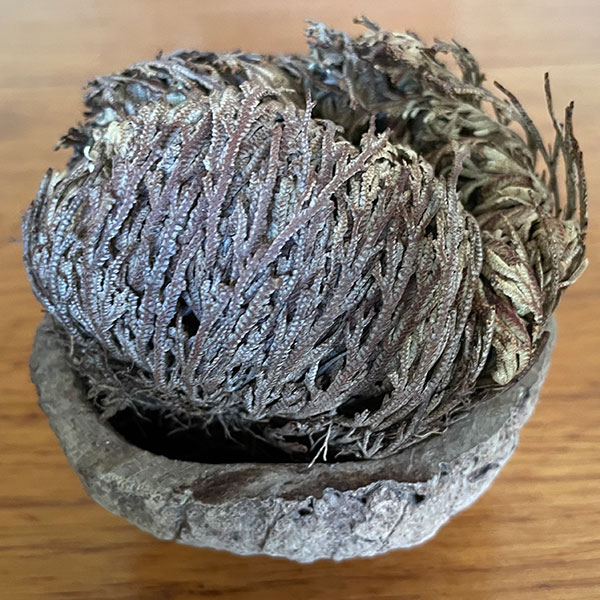“Rose of Jericho” or “Resurrection Plant”

You could not call it a beautiful plant in the everyday sense however Selaginella lepidophylla is amazing.
This is a plant from Mexico, Texas and other nearby areas and it is a lycopod, which are better known as club moss and spike moss..
My first encounter was with one brought to Australia by an American soldier named Gene at the end of WWII.
I remember well as as a child when I ‘discovered’ one that had been hidden away in a cupboard for a number of years. It looked like a dried up ball of an old plant with some dried up roots.
Natural curiosity led me to water this dried up relic, and to my amazement it opened and turned green. I was hooked at the age of 10.
Selaginella lepidophylla is commonly called the “Rose of Jericho”, “Resurrection Plant”, “Dinosaur Plant”, “Siempre Viva” and a few other names. We called it the “Desert Rose”.
It grows in the desert and for much of its life spends its time curled up in a ball of seemingly dead foliage.
As soon as it rains, the foliage opens up and turns green. And it does look a little rose shaped. so all of those common names make sense.
Selaginella lepidophylla Care
This is a plant that require extremely good drainage.
Its natural environment if on rocky outcrops in poor soil.
Use a specialist cactus and succulent potting mix and generally use a fairly shallow container.
Although the plant does not form a large root ball it does form sorts of roots, just enough to attach itself to the ground.
- Light. Good sun to filtered light.
- Climate Warm to hot, protect from frosts
- Watering This is a desert plant that only opens when it rains.
Constant moisture will cause fungal problems. 80% of the time it should be dry, with brief periods of watering for a day or two.
From summer to autumn the plant should receive no water at all.
It will curl up into a brown ball, however this is its natural habit.
Long periods of watering over winter are also not recommended.
